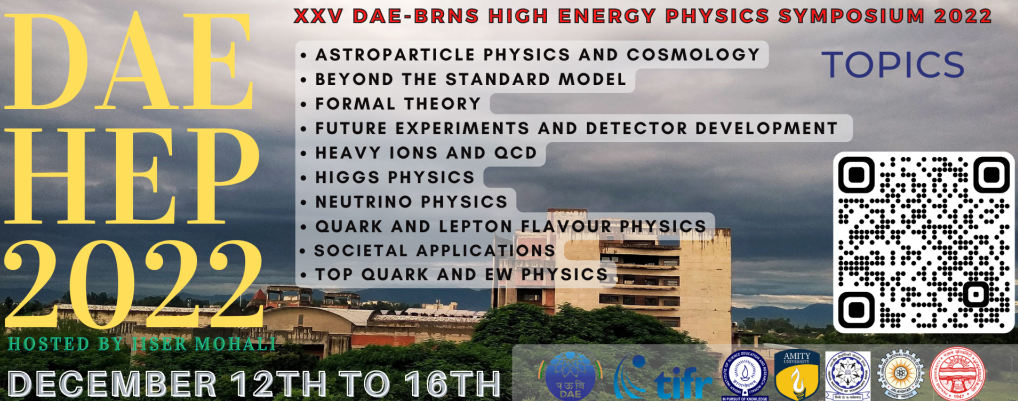Speaker
Description
Test results of Real size Station-1 MuCh modules in the nucleus-nucleus collisions at mini-CBM experiment at GSI
A. Agarwal1,2, C. Ghosh1,2, A.K. Dubey1, J. Saini1, E. Nandy1,2, V. Singhal1,V. Negi1, S. Roy3, S. Chatterjee3, A.Kumar4, C. Sturm5, D. Emschermann5, P. A. Loizeau5 and S. Chattopadhyay5
1VECC, Kolkata, 2HBNI, Mumbai,
3 Bose Institute, Kolkata,
4NISER, Jatni,
5GSI, Germany
Corresponding author. Email: a.agarwal@vecc.gov.in
The goal of the Muon Chamber (MuCh) system of the Compressed Baryonic Matter(CBM) experiment at FAIR is to measure dimuon signals arising from the nucleus-nucleus collisions at lab energies of 2-11 AGeV. Tracking detectors based on the Gas Electron Multiplier (GEM) technology will be used in the first two stations of MuCh. Two such real size GEM modules have been fabricated and commissioned for response studies in the mini-CBM(mCBM) experiment at the SIS18 beamline at GSI. mCBM is a part of the FAIR-phase0 program of CBM and provides a dedicated facility for the test of detector subsystem, their electronics, their integrated response and high volume data transport under heavy ion collisions environment. The detailed setup of mCBM will be discussed.
The trapezoidal GEM modules having an area ~2000 sq. cm. and with 2.2 k readout pads each, have participated in the major beamtime campaigns at mCBM. Data has been acquired using self-triggered readout electronics, STS/MuCh-XYTER. Data at different GEM voltages and for beams of varying beam intensities and target thicknesses have been taken. The response in terms of spill structure, cluster-size characteristics, time correlation between detector subsystems will be presented. Event reconstruction based on the time stamps of the signal hits in a free-streaming data will be discussed. Recently, intensity scan data with U-Au and Au-Au collisions have been taken, where interaction rates of about 1 MHz have been achieved. Preliminary results from these tests which were carried out with upgraded GEM modules will be presented. All the key test results along with the hardware design issues and modifications will be reported and discussed.
| Session | Future Experiments and Detector Development |
|---|
